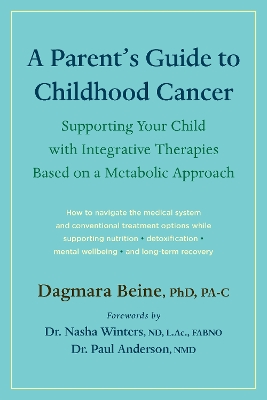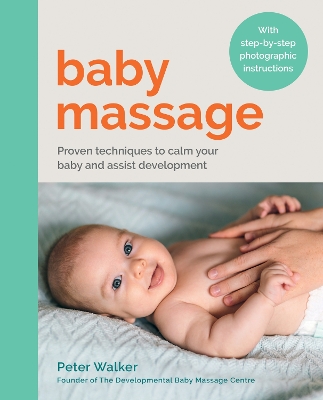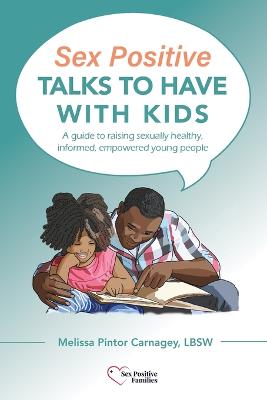Promoting Health and Academic Success
 portes grátis
portes grátis
Promoting Health and Academic Success
The WSCC Approach
Kolbe, Lloyd J.; Birch, David A.; Videto, Donna M.; Catalano, Hannah P.
Human Kinetics Publishers
07/2024
264
Mole
Inglês
9781718217140
15 a 20 dias
Descrição não disponível.
Chapter 1. Whole School, Whole Community, Whole Child: A Framework for Health and Academic Success
David A. Birch, Hannah P. Catalano, and Donna M. Videto
Evolution of School Health
Moving From CSH to WSCC
WSCC Resources: Enhancing the Presence of the Model and Supporting WSCC in Practice
Summary
Learning Aids
References
Chapter 2. History of WSCC
Diane DeMuth Allensworth and Hannah P. Catalano
First Stage of Health Promotion: Addressing Infectious Diseases
Second Stage of Health Promotion: Addressing Individual Behaviors
Third Stage of Health Promotion: Addressing the Social Determinants of Health
Evolution of the WSCC Model
Summary
Learning Aids
References
Chapter 3. Overview of the WSCC Model
Hannah P. Catalano, David A. Birch, and Donna M. Videto
WSCC Model Overview
The 10 WSCC Components
School Health Index
Community as an Overarching WSCC Concept
Summary
Learning Aids
References
Chapter 4. Health and Academic Success
Michele Wallen
Health Risk Behaviors
Health and Education in Early Childhood
Adverse Childhood Experiences
Chronic Absenteeism
Making a Difference Through the WSCC Approach
Summary
Learning Aids
References
Chapter 5. Meeting the Needs of Diverse Students, Families, and Communities
Angelia M. Sanders
Students With Disproportionately Poor Education Outcomes
Diversity, Equity, and Inclusion
Considerations Related to Social Justice-Oriented Schools
Promoting Diversity, Equity, and Inclusion Through Cultural Humility
Incorporating Diversity, Equity, and Inclusion Into Family Engagement
Promoting Diversity, Equity, and Inclusion Through Community Involvement
Summary
Learning Aids
References
Chapter 6. Developing and Maintaining Collaborations
Bonni C. Hodges and Donna M. Videto
School-Family-Community Collaborations
Developing Successful Collaborations
Supporting Quality Collaborations
Barriers and Challenges to Collaboration
Recruiting Partners for Collaborations
Implementing and Sustaining Collaborations
Summary
Learning Aids
References
Chapter 7. Planning and Evaluating WSCC
Donna M. Videto and Bonni C. Hodges
Systematic Planning
Creating a Comprehensive Profile for Program Planning
Actions for Collecting Needs Assessment Profile Data
A Word About Data and Their Use
Evaluating WSCC
Planning for Program Evaluation
Summary
Learning Aids
References
Chapter 8. Implementing WSCC
Donna M. Videto, Hannah P. Catalano, and David A. Birch
Step 1. Establish Leadership With a Designated School Health Coordinator
Step 2. Secure Administrative Support and Develop a District-Level School Health Council and School Health Teams
Step 3. Identify Available Resources in the School, District, and Community
Step 4. After Reviewing the Initial Data, Determine the Outcomes of Greatest Priority
Step 5. Create an Action Plan Based on Realistic Goals and Objectives Agreed Upon by Partners
Step 6. Establish a Realistic Timeline for Implementing Strategies From the Action Plan
Step 7. Implement the Plan and Strategies
Step 8. Review and Implement the Evaluation Plan
Step 9. Provide Professional Development for Faculty and Staff
Step 10. Communicate Steps and Successes
Summary
Learning Aids
References
Chapter 9. Considerations for WSCC in Practice
A Perspective on the Role of State Education Agencies in Promoting WSCC
Rosemary Reilly-Chammat
The Role of the Federal Government in Education
The Role of the States in Education
Leadership by State Education Agencies in School Health
Frameworks to Support the Work: WSCC and the Multitiered System of Supports (MTSS)
Future Opportunities
References
Every School Healthy: An Urban School Case Study
Sue Baldwin and Assunta R. Ventresca
Needs Assessment and District Response
Key Stakeholder Engagement
Professional Development
Implications for School Health
References
A Synopsis of International Efforts to Improve School Health Programs
Lloyd J. Kolbe
The Need for International Efforts to Improve School Health Programs
U.S. and International School Health Program Frameworks
International Organizations Working to Improve School Health Programs
Journals of School Health
The Future of National and International Efforts to Improve School Health Programs
Summary
References
Teacher Education: Preparing Educators for WSCC Engagement
Elisa Beth McNeil
References
The Importance of Professional Development
Lori Paisley
WSCC Professional Development
Summary
References
Learning Aids
Chapter 10. Perspectives on WSCC in Practice
The American School Health Association's Perspective on the WSCC Framework
Kayce D. Solari Williams and Randi J. Alter
The Role of the American School Health Association in Advancing the WSCC Framework
Working Across Disciplines for Student Success
The Role of Associations in Advancing WSCC Into the Future
References
Society for Public Health Education: Champion for Quality School Health Education
M. Elaine Auld
The Early Years
Ramping Up Efforts
WSCC Takes Center Stage
Moving Forward
References
The Whole Campus Model: A WSCC Framework for Health Promotion on College Campuses
Bonni C. Hodges, Donna M. Videto, and Alexis Blavos
The Whole College Student
The Whole Campus Model
Summary
References
The Need for a WSCC-Based School Health Research Agenda
Michael J. Mann
The Importance of School Health and School Health Research
The Promise of the WSCC Model
Outstanding Questions Shaping the Future of WSCC-Based School Health Research
The Promise of a WSCC-Based Research Agenda for School Health
Elements of an Effective Process
Imagining the Future of WSCC
Summary
References
WSCC: A Future Perspective
Sean Slade
A Model for Our Times
Pandemic as a Cure
The Rise of WSCC
Where We Are Going
A Culture of Well-Being
Toward a Healthy Future
References
Learning Aids
David A. Birch, Hannah P. Catalano, and Donna M. Videto
Evolution of School Health
Moving From CSH to WSCC
WSCC Resources: Enhancing the Presence of the Model and Supporting WSCC in Practice
Summary
Learning Aids
References
Chapter 2. History of WSCC
Diane DeMuth Allensworth and Hannah P. Catalano
First Stage of Health Promotion: Addressing Infectious Diseases
Second Stage of Health Promotion: Addressing Individual Behaviors
Third Stage of Health Promotion: Addressing the Social Determinants of Health
Evolution of the WSCC Model
Summary
Learning Aids
References
Chapter 3. Overview of the WSCC Model
Hannah P. Catalano, David A. Birch, and Donna M. Videto
WSCC Model Overview
The 10 WSCC Components
School Health Index
Community as an Overarching WSCC Concept
Summary
Learning Aids
References
Chapter 4. Health and Academic Success
Michele Wallen
Health Risk Behaviors
Health and Education in Early Childhood
Adverse Childhood Experiences
Chronic Absenteeism
Making a Difference Through the WSCC Approach
Summary
Learning Aids
References
Chapter 5. Meeting the Needs of Diverse Students, Families, and Communities
Angelia M. Sanders
Students With Disproportionately Poor Education Outcomes
Diversity, Equity, and Inclusion
Considerations Related to Social Justice-Oriented Schools
Promoting Diversity, Equity, and Inclusion Through Cultural Humility
Incorporating Diversity, Equity, and Inclusion Into Family Engagement
Promoting Diversity, Equity, and Inclusion Through Community Involvement
Summary
Learning Aids
References
Chapter 6. Developing and Maintaining Collaborations
Bonni C. Hodges and Donna M. Videto
School-Family-Community Collaborations
Developing Successful Collaborations
Supporting Quality Collaborations
Barriers and Challenges to Collaboration
Recruiting Partners for Collaborations
Implementing and Sustaining Collaborations
Summary
Learning Aids
References
Chapter 7. Planning and Evaluating WSCC
Donna M. Videto and Bonni C. Hodges
Systematic Planning
Creating a Comprehensive Profile for Program Planning
Actions for Collecting Needs Assessment Profile Data
A Word About Data and Their Use
Evaluating WSCC
Planning for Program Evaluation
Summary
Learning Aids
References
Chapter 8. Implementing WSCC
Donna M. Videto, Hannah P. Catalano, and David A. Birch
Step 1. Establish Leadership With a Designated School Health Coordinator
Step 2. Secure Administrative Support and Develop a District-Level School Health Council and School Health Teams
Step 3. Identify Available Resources in the School, District, and Community
Step 4. After Reviewing the Initial Data, Determine the Outcomes of Greatest Priority
Step 5. Create an Action Plan Based on Realistic Goals and Objectives Agreed Upon by Partners
Step 6. Establish a Realistic Timeline for Implementing Strategies From the Action Plan
Step 7. Implement the Plan and Strategies
Step 8. Review and Implement the Evaluation Plan
Step 9. Provide Professional Development for Faculty and Staff
Step 10. Communicate Steps and Successes
Summary
Learning Aids
References
Chapter 9. Considerations for WSCC in Practice
A Perspective on the Role of State Education Agencies in Promoting WSCC
Rosemary Reilly-Chammat
The Role of the Federal Government in Education
The Role of the States in Education
Leadership by State Education Agencies in School Health
Frameworks to Support the Work: WSCC and the Multitiered System of Supports (MTSS)
Future Opportunities
References
Every School Healthy: An Urban School Case Study
Sue Baldwin and Assunta R. Ventresca
Needs Assessment and District Response
Key Stakeholder Engagement
Professional Development
Implications for School Health
References
A Synopsis of International Efforts to Improve School Health Programs
Lloyd J. Kolbe
The Need for International Efforts to Improve School Health Programs
U.S. and International School Health Program Frameworks
International Organizations Working to Improve School Health Programs
Journals of School Health
The Future of National and International Efforts to Improve School Health Programs
Summary
References
Teacher Education: Preparing Educators for WSCC Engagement
Elisa Beth McNeil
References
The Importance of Professional Development
Lori Paisley
WSCC Professional Development
Summary
References
Learning Aids
Chapter 10. Perspectives on WSCC in Practice
The American School Health Association's Perspective on the WSCC Framework
Kayce D. Solari Williams and Randi J. Alter
The Role of the American School Health Association in Advancing the WSCC Framework
Working Across Disciplines for Student Success
The Role of Associations in Advancing WSCC Into the Future
References
Society for Public Health Education: Champion for Quality School Health Education
M. Elaine Auld
The Early Years
Ramping Up Efforts
WSCC Takes Center Stage
Moving Forward
References
The Whole Campus Model: A WSCC Framework for Health Promotion on College Campuses
Bonni C. Hodges, Donna M. Videto, and Alexis Blavos
The Whole College Student
The Whole Campus Model
Summary
References
The Need for a WSCC-Based School Health Research Agenda
Michael J. Mann
The Importance of School Health and School Health Research
The Promise of the WSCC Model
Outstanding Questions Shaping the Future of WSCC-Based School Health Research
The Promise of a WSCC-Based Research Agenda for School Health
Elements of an Effective Process
Imagining the Future of WSCC
Summary
References
WSCC: A Future Perspective
Sean Slade
A Model for Our Times
Pandemic as a Cure
The Rise of WSCC
Where We Are Going
A Culture of Well-Being
Toward a Healthy Future
References
Learning Aids
Este título pertence ao(s) assunto(s) indicados(s). Para ver outros títulos clique no assunto desejado.
Health education; WSCC approach; whole school child community health; health and wellness; school wellness; student health learning; social emotional health; academic improvement; school nutrition; academic success; family engagement
Chapter 1. Whole School, Whole Community, Whole Child: A Framework for Health and Academic Success
David A. Birch, Hannah P. Catalano, and Donna M. Videto
Evolution of School Health
Moving From CSH to WSCC
WSCC Resources: Enhancing the Presence of the Model and Supporting WSCC in Practice
Summary
Learning Aids
References
Chapter 2. History of WSCC
Diane DeMuth Allensworth and Hannah P. Catalano
First Stage of Health Promotion: Addressing Infectious Diseases
Second Stage of Health Promotion: Addressing Individual Behaviors
Third Stage of Health Promotion: Addressing the Social Determinants of Health
Evolution of the WSCC Model
Summary
Learning Aids
References
Chapter 3. Overview of the WSCC Model
Hannah P. Catalano, David A. Birch, and Donna M. Videto
WSCC Model Overview
The 10 WSCC Components
School Health Index
Community as an Overarching WSCC Concept
Summary
Learning Aids
References
Chapter 4. Health and Academic Success
Michele Wallen
Health Risk Behaviors
Health and Education in Early Childhood
Adverse Childhood Experiences
Chronic Absenteeism
Making a Difference Through the WSCC Approach
Summary
Learning Aids
References
Chapter 5. Meeting the Needs of Diverse Students, Families, and Communities
Angelia M. Sanders
Students With Disproportionately Poor Education Outcomes
Diversity, Equity, and Inclusion
Considerations Related to Social Justice-Oriented Schools
Promoting Diversity, Equity, and Inclusion Through Cultural Humility
Incorporating Diversity, Equity, and Inclusion Into Family Engagement
Promoting Diversity, Equity, and Inclusion Through Community Involvement
Summary
Learning Aids
References
Chapter 6. Developing and Maintaining Collaborations
Bonni C. Hodges and Donna M. Videto
School-Family-Community Collaborations
Developing Successful Collaborations
Supporting Quality Collaborations
Barriers and Challenges to Collaboration
Recruiting Partners for Collaborations
Implementing and Sustaining Collaborations
Summary
Learning Aids
References
Chapter 7. Planning and Evaluating WSCC
Donna M. Videto and Bonni C. Hodges
Systematic Planning
Creating a Comprehensive Profile for Program Planning
Actions for Collecting Needs Assessment Profile Data
A Word About Data and Their Use
Evaluating WSCC
Planning for Program Evaluation
Summary
Learning Aids
References
Chapter 8. Implementing WSCC
Donna M. Videto, Hannah P. Catalano, and David A. Birch
Step 1. Establish Leadership With a Designated School Health Coordinator
Step 2. Secure Administrative Support and Develop a District-Level School Health Council and School Health Teams
Step 3. Identify Available Resources in the School, District, and Community
Step 4. After Reviewing the Initial Data, Determine the Outcomes of Greatest Priority
Step 5. Create an Action Plan Based on Realistic Goals and Objectives Agreed Upon by Partners
Step 6. Establish a Realistic Timeline for Implementing Strategies From the Action Plan
Step 7. Implement the Plan and Strategies
Step 8. Review and Implement the Evaluation Plan
Step 9. Provide Professional Development for Faculty and Staff
Step 10. Communicate Steps and Successes
Summary
Learning Aids
References
Chapter 9. Considerations for WSCC in Practice
A Perspective on the Role of State Education Agencies in Promoting WSCC
Rosemary Reilly-Chammat
The Role of the Federal Government in Education
The Role of the States in Education
Leadership by State Education Agencies in School Health
Frameworks to Support the Work: WSCC and the Multitiered System of Supports (MTSS)
Future Opportunities
References
Every School Healthy: An Urban School Case Study
Sue Baldwin and Assunta R. Ventresca
Needs Assessment and District Response
Key Stakeholder Engagement
Professional Development
Implications for School Health
References
A Synopsis of International Efforts to Improve School Health Programs
Lloyd J. Kolbe
The Need for International Efforts to Improve School Health Programs
U.S. and International School Health Program Frameworks
International Organizations Working to Improve School Health Programs
Journals of School Health
The Future of National and International Efforts to Improve School Health Programs
Summary
References
Teacher Education: Preparing Educators for WSCC Engagement
Elisa Beth McNeil
References
The Importance of Professional Development
Lori Paisley
WSCC Professional Development
Summary
References
Learning Aids
Chapter 10. Perspectives on WSCC in Practice
The American School Health Association's Perspective on the WSCC Framework
Kayce D. Solari Williams and Randi J. Alter
The Role of the American School Health Association in Advancing the WSCC Framework
Working Across Disciplines for Student Success
The Role of Associations in Advancing WSCC Into the Future
References
Society for Public Health Education: Champion for Quality School Health Education
M. Elaine Auld
The Early Years
Ramping Up Efforts
WSCC Takes Center Stage
Moving Forward
References
The Whole Campus Model: A WSCC Framework for Health Promotion on College Campuses
Bonni C. Hodges, Donna M. Videto, and Alexis Blavos
The Whole College Student
The Whole Campus Model
Summary
References
The Need for a WSCC-Based School Health Research Agenda
Michael J. Mann
The Importance of School Health and School Health Research
The Promise of the WSCC Model
Outstanding Questions Shaping the Future of WSCC-Based School Health Research
The Promise of a WSCC-Based Research Agenda for School Health
Elements of an Effective Process
Imagining the Future of WSCC
Summary
References
WSCC: A Future Perspective
Sean Slade
A Model for Our Times
Pandemic as a Cure
The Rise of WSCC
Where We Are Going
A Culture of Well-Being
Toward a Healthy Future
References
Learning Aids
David A. Birch, Hannah P. Catalano, and Donna M. Videto
Evolution of School Health
Moving From CSH to WSCC
WSCC Resources: Enhancing the Presence of the Model and Supporting WSCC in Practice
Summary
Learning Aids
References
Chapter 2. History of WSCC
Diane DeMuth Allensworth and Hannah P. Catalano
First Stage of Health Promotion: Addressing Infectious Diseases
Second Stage of Health Promotion: Addressing Individual Behaviors
Third Stage of Health Promotion: Addressing the Social Determinants of Health
Evolution of the WSCC Model
Summary
Learning Aids
References
Chapter 3. Overview of the WSCC Model
Hannah P. Catalano, David A. Birch, and Donna M. Videto
WSCC Model Overview
The 10 WSCC Components
School Health Index
Community as an Overarching WSCC Concept
Summary
Learning Aids
References
Chapter 4. Health and Academic Success
Michele Wallen
Health Risk Behaviors
Health and Education in Early Childhood
Adverse Childhood Experiences
Chronic Absenteeism
Making a Difference Through the WSCC Approach
Summary
Learning Aids
References
Chapter 5. Meeting the Needs of Diverse Students, Families, and Communities
Angelia M. Sanders
Students With Disproportionately Poor Education Outcomes
Diversity, Equity, and Inclusion
Considerations Related to Social Justice-Oriented Schools
Promoting Diversity, Equity, and Inclusion Through Cultural Humility
Incorporating Diversity, Equity, and Inclusion Into Family Engagement
Promoting Diversity, Equity, and Inclusion Through Community Involvement
Summary
Learning Aids
References
Chapter 6. Developing and Maintaining Collaborations
Bonni C. Hodges and Donna M. Videto
School-Family-Community Collaborations
Developing Successful Collaborations
Supporting Quality Collaborations
Barriers and Challenges to Collaboration
Recruiting Partners for Collaborations
Implementing and Sustaining Collaborations
Summary
Learning Aids
References
Chapter 7. Planning and Evaluating WSCC
Donna M. Videto and Bonni C. Hodges
Systematic Planning
Creating a Comprehensive Profile for Program Planning
Actions for Collecting Needs Assessment Profile Data
A Word About Data and Their Use
Evaluating WSCC
Planning for Program Evaluation
Summary
Learning Aids
References
Chapter 8. Implementing WSCC
Donna M. Videto, Hannah P. Catalano, and David A. Birch
Step 1. Establish Leadership With a Designated School Health Coordinator
Step 2. Secure Administrative Support and Develop a District-Level School Health Council and School Health Teams
Step 3. Identify Available Resources in the School, District, and Community
Step 4. After Reviewing the Initial Data, Determine the Outcomes of Greatest Priority
Step 5. Create an Action Plan Based on Realistic Goals and Objectives Agreed Upon by Partners
Step 6. Establish a Realistic Timeline for Implementing Strategies From the Action Plan
Step 7. Implement the Plan and Strategies
Step 8. Review and Implement the Evaluation Plan
Step 9. Provide Professional Development for Faculty and Staff
Step 10. Communicate Steps and Successes
Summary
Learning Aids
References
Chapter 9. Considerations for WSCC in Practice
A Perspective on the Role of State Education Agencies in Promoting WSCC
Rosemary Reilly-Chammat
The Role of the Federal Government in Education
The Role of the States in Education
Leadership by State Education Agencies in School Health
Frameworks to Support the Work: WSCC and the Multitiered System of Supports (MTSS)
Future Opportunities
References
Every School Healthy: An Urban School Case Study
Sue Baldwin and Assunta R. Ventresca
Needs Assessment and District Response
Key Stakeholder Engagement
Professional Development
Implications for School Health
References
A Synopsis of International Efforts to Improve School Health Programs
Lloyd J. Kolbe
The Need for International Efforts to Improve School Health Programs
U.S. and International School Health Program Frameworks
International Organizations Working to Improve School Health Programs
Journals of School Health
The Future of National and International Efforts to Improve School Health Programs
Summary
References
Teacher Education: Preparing Educators for WSCC Engagement
Elisa Beth McNeil
References
The Importance of Professional Development
Lori Paisley
WSCC Professional Development
Summary
References
Learning Aids
Chapter 10. Perspectives on WSCC in Practice
The American School Health Association's Perspective on the WSCC Framework
Kayce D. Solari Williams and Randi J. Alter
The Role of the American School Health Association in Advancing the WSCC Framework
Working Across Disciplines for Student Success
The Role of Associations in Advancing WSCC Into the Future
References
Society for Public Health Education: Champion for Quality School Health Education
M. Elaine Auld
The Early Years
Ramping Up Efforts
WSCC Takes Center Stage
Moving Forward
References
The Whole Campus Model: A WSCC Framework for Health Promotion on College Campuses
Bonni C. Hodges, Donna M. Videto, and Alexis Blavos
The Whole College Student
The Whole Campus Model
Summary
References
The Need for a WSCC-Based School Health Research Agenda
Michael J. Mann
The Importance of School Health and School Health Research
The Promise of the WSCC Model
Outstanding Questions Shaping the Future of WSCC-Based School Health Research
The Promise of a WSCC-Based Research Agenda for School Health
Elements of an Effective Process
Imagining the Future of WSCC
Summary
References
WSCC: A Future Perspective
Sean Slade
A Model for Our Times
Pandemic as a Cure
The Rise of WSCC
Where We Are Going
A Culture of Well-Being
Toward a Healthy Future
References
Learning Aids
Este título pertence ao(s) assunto(s) indicados(s). Para ver outros títulos clique no assunto desejado.







